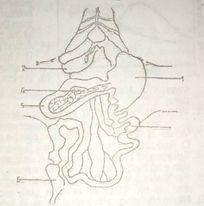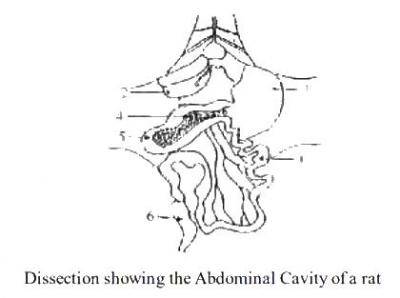Year :
1991
Title :
Biology
Exam :
JAMB Exam
Paper 1 | Objectives
41 - 50 of 50 Questions
| # | Question | Ans |
|---|---|---|
| 41. |
Which of the following is likely to occur in a deciduous forest during the dry season? A. New leaves are formed B. The trees die off C. The undergrowth increases D. The ground becomes bare Detailed SolutionTrees in tropical deciduous forests lose their leaves in the dry season and regrow them in the rainy season. In temperate deciduous forests, trees lose their leaves in the fall and regrow them in the spring. |
|
| 42. |
Which of these is NOT an adaptive features for arboreal life? A. Possession of long tail B. Possession of claws C. Possession of teeths D. counter shading in coat colour |
C |
| 43. |
Which of the following diseases can be prevented by innoculation? A. Syphilis B. Malaria fever C. Tuberculosis D. Acquired Immune Deficiency Syndrom |
C |
| 44. |
Sources of air pollutants are A. industrial chimneys, burning fossil oils and river dam B. sulphur dioxide, acid rain and pesticides C. sulphur mines, vehicle exhausts and aerosols D. sewage, smoke and old vehicle |
C |
| 45. |
Fertilizers are lost from the soil through A. sheet erosion and evaporation B. leaching, underground seepages and run-off C. sheet erosion, gully erosion and wind erosion D. wind erosion and heavy rainfall |
B |
| 46. |
Nitrogen- fixing micro-organisms in leguminous plants live symbiotically in the A. root nodules B. tap root C. branch roots D. root hairs |
A |
| 47. |
 The structure labelled 4 is for A. feeding B. attachment C. excretion D. respiration |
B |
| 48. |
 As the tadpole develops, the structure labelled 5 A. grows longer B. becomes shorter C. becomes the hind legs D. remains unchanged |
B |
| 49. |
 In the digestive system, absorption of nutrient into the blood takes place in the part labeled? A. 1 B. 2 C. 3 D. 4 |
C |
| 50. |
 The gland which produces trypsin, amylase and lipase is labeled? A. 6 B. 4 C. 2 D. 1 Detailed SolutionThe pancreas ( the organ labeled 4) contains exocrine glands that produce enzymes important to digestion. These enzymes include trypsin and chymotrypsin to digest proteins; amylase for the digestion of carbohydrates; and lipase to break down fats. |
| 41. |
Which of the following is likely to occur in a deciduous forest during the dry season? A. New leaves are formed B. The trees die off C. The undergrowth increases D. The ground becomes bare Detailed SolutionTrees in tropical deciduous forests lose their leaves in the dry season and regrow them in the rainy season. In temperate deciduous forests, trees lose their leaves in the fall and regrow them in the spring. |
|
| 42. |
Which of these is NOT an adaptive features for arboreal life? A. Possession of long tail B. Possession of claws C. Possession of teeths D. counter shading in coat colour |
C |
| 43. |
Which of the following diseases can be prevented by innoculation? A. Syphilis B. Malaria fever C. Tuberculosis D. Acquired Immune Deficiency Syndrom |
C |
| 44. |
Sources of air pollutants are A. industrial chimneys, burning fossil oils and river dam B. sulphur dioxide, acid rain and pesticides C. sulphur mines, vehicle exhausts and aerosols D. sewage, smoke and old vehicle |
C |
| 45. |
Fertilizers are lost from the soil through A. sheet erosion and evaporation B. leaching, underground seepages and run-off C. sheet erosion, gully erosion and wind erosion D. wind erosion and heavy rainfall |
B |
| 46. |
Nitrogen- fixing micro-organisms in leguminous plants live symbiotically in the A. root nodules B. tap root C. branch roots D. root hairs |
A |
| 47. |
 The structure labelled 4 is for A. feeding B. attachment C. excretion D. respiration |
B |
| 48. |
 As the tadpole develops, the structure labelled 5 A. grows longer B. becomes shorter C. becomes the hind legs D. remains unchanged |
B |
| 49. |
 In the digestive system, absorption of nutrient into the blood takes place in the part labeled? A. 1 B. 2 C. 3 D. 4 |
C |
| 50. |
 The gland which produces trypsin, amylase and lipase is labeled? A. 6 B. 4 C. 2 D. 1 Detailed SolutionThe pancreas ( the organ labeled 4) contains exocrine glands that produce enzymes important to digestion. These enzymes include trypsin and chymotrypsin to digest proteins; amylase for the digestion of carbohydrates; and lipase to break down fats. |